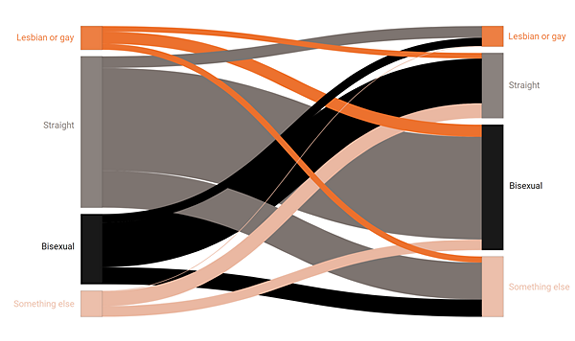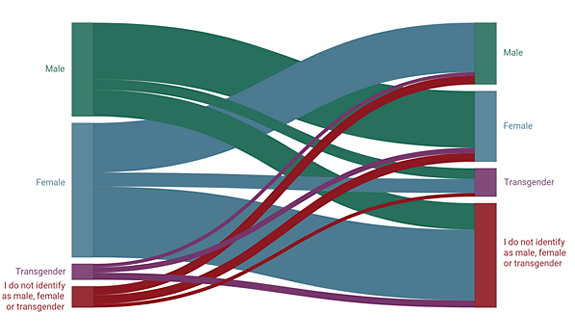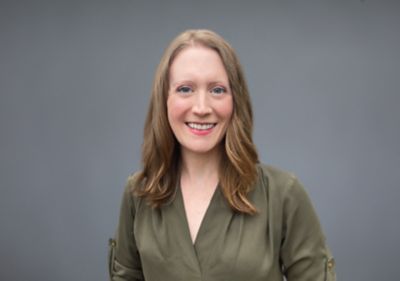
Should you be re-asking sexual orientation and gender identity in your surveys?
Contrary to notions of sexual and gender identity as static (fixed), research has shown that sexual orientation and gender identity (SOGI) can change over the life course.
Contrary to notions of sexual and gender identity as static (fixed), research has shown that sexual orientation and gender identity (SOGI) can change over the life course. Given that changes to SOGI likely occur among a percentage of any group, it is essential that longitudinal studies, including survey panels, update their SOGI demographics periodically like other demographics that can change over time (e.g., income, education).
Although clinical guidance suggests the importance of periodically asking SOGI questions, no empirical work offers recommendations on how often to re-ask adults or adolescents about SOGI items in research. To address this gap, NORC used AmeriSpeak® adult and teen panel data to look longitudinally at changes in reported SOGI over time and identify trends. NORC is also developing recommendations for survey researchers about the frequency of re-asking SOGI. This guidance will be useful for maintaining a survey panel and for longitudinal survey work, among other applications.
Early research used a developmental model that suggested that sexual or gender minority (SGM) identity follows a linear progression from awareness of difference in childhood to recognition during early adolescence to assuming an SGM identity label in late adolescence or early adulthood (e.g., Troiden, 1989). Adolescence, characterized by both social and physical changes, is of special interest to gender and sexuality researchers. However, recent data have proven that such models of identity formation are limited. In fact, identity can and does shift throughout the life course, not just during adolescence, and, further, identity changes are not necessarily linear or unidirectional (e.g., Mock and Eibach, 2012). Asking about SOGI at a single point in time may lead to inaccurate counts of the population; potential undercounting of SGM populations in surveys decreases visibility and our ability to understand disparities in health and economic outcomes that affect them.
NORC reviewed SOGI data collected by AmeriSpeak from 2014 to 2022 using a mix of panel update surveys and topic-specific surveys that re-asked sexual orientation and/or gender identity. We found:
- As expected, for most panelists, sexual orientation and gender identity during that period did not change.
- Among adult panelists, 3.7% of panelists reported a change in sexual orientation, and 1.2% reported a change in gender identity.
- Among teen panelists, who are in a developmental period more apt to change identity, 14.4% reported a change in sexual orientation, and 9.6% reported a change in gender identity.
Figures 1 and 2 below depict the direction of change among adult panelists who reported any change in sexual orientation or gender identity during the review period.




As demonstrated by these findings, researchers should expect changes in SOGI among large samples of both adults and teens. These changes in how an individual reports their gender or sexuality could be due to a change in identity or a change in perception of safety with reporting a minority status. In addition, societal changes can affect SOGI reporting, such as changing trends in public opinions toward SGM communities and/or laws and policies related to SGM rights.
We also recognize there may be changes in SOGI reporting due to methodology, that is, changes that are influenced by something controlled by survey researchers, such as mode of administration (web versus phone); language (English versus Spanish); or the response options offered (e.g., including nonbinary as a response option to gender identity). We also note that there are likely a small number of reporting errors that result when individuals accidentally click on the wrong response option in a survey.
These findings reinforce that, regardless of the driver of change, it is critical for longitudinal surveys and panels to re-ask sexual orientation and gender identity of participants to ensure up-to-date demographic data. Improvements in SOGI measurement can help advance data quality and, ultimately, the evidence-based interventions supporting SGM communities that these data help to inform.
Future work will focus on understanding demographic or methodological characteristics associated with changes in reporting, with a focus on the age at which changes are reported. In particular, analysis of teen data may help answer gaps in the literature, such as the youngest age at which SOGI questions can be feasibly and reliably asked (identified in the 2022 NASEM report, Measuring Sex, Gender Identity, and Sexual Orientation). We intend to publish full findings, including demographic analysis, in 2023.
Special thanks to other members of our research team: Erin Fordyce, Sabrina Avripas, Michelle M. Johns, and Stuart Michaels.




